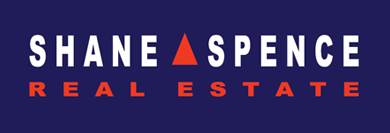
Investors Opting Out
High Interest Rates, Increased Regulation
For a number of reasons, it appears there is an increasing number of investors opting out of the market. At a time when supply of investment properties is at a low and demand is at an all time high, this cannot bode well for renters. The squeeze on rental returns is at an all time low. When I first started in real estate in 1990, the conventional rule of thumb was that an investor could expect to achieve a steady, 5% gross rental return. Over the years, this has declined to below 3.0% for a unit and 2.3% or less for a house. Remembering these are gross rental returns. After expenses and land tax, net rental returns may be below 2.0% for a unit and 1.5% for a house.
Critics will rightfully point to high capital gains. Here on the Northern Beaches capital gains have been in the order of 155% over the last 10-years. I am guessing that might be around 400% over the past 30-years of my career.
So why are investors selling up. One reason may be that Baby Boomers who have been the much maligned predominant group investing in real estate are getting older; selling up their assets to fund their retirement. More recent investors who have extended their finances when interest rates were low, are selling up to avoid crippling high interest rates, which are not off set by rents; despite recent rent increases. And my own personal belief is that many investors are frightened by the talk of rent freezes, rent control and other regulations such as the banning of no-reason termination notices, and pet regulations and are thinking it is all just getting to hard for too little return.
The article below from Corelogic, talks about the impact of interest rate rises and the impact on investors selling out of the market. To read the full article by Eliza Owen of Corelogic go to: https://www.corelogic.com.au/news-research/news/2023/as-rates-rise-and-times-get-tough,-property-investors-opt-out-of-market?utm_medium=email&utm_source=newsletter&utm_campaign=au-rea-property-pulse-2023-jun
As rates rise and times get tough, property investors opt out of market
There’s been plenty of attention on the supply and demand deficit contributing to the Australian property market’s resilience. As of May, new listings added to the market were -20% below the previous decade monthly average across Australia and the ‘months of supply’ ratio, which measures the amount of time it would take to deplete stock based on the current rate of home sales, fell to 1.8 months in May.
Interestingly though there’s a stark difference between the market’s overall listings trend and investor behaviour at present. CoreLogic infers which listings are investor-owned based on the rental history of a property. Based on these estimates, new investor listings brought to the market over May are only -2.9% lower than the previous decade monthly average.
In three capital cities – Sydney, Melbourne and Perth – investor listings for May were actually higher than the previous decade average.
At a more granular level the proportion of investor listings on the market in May has shot up in inner city areas, traditional hot spots for multiple property owners.

Recent Comments